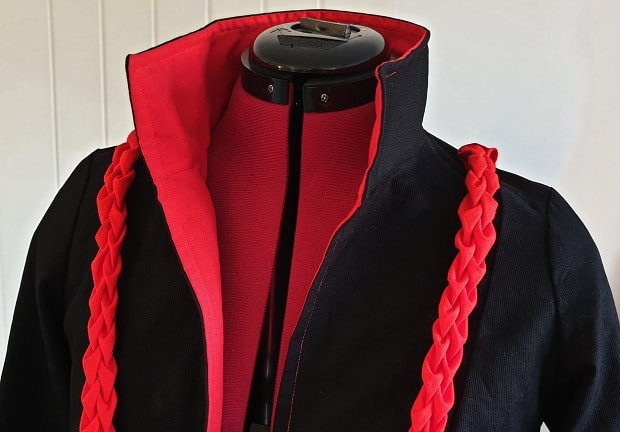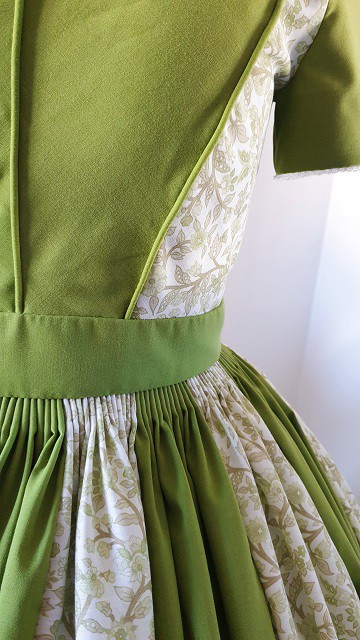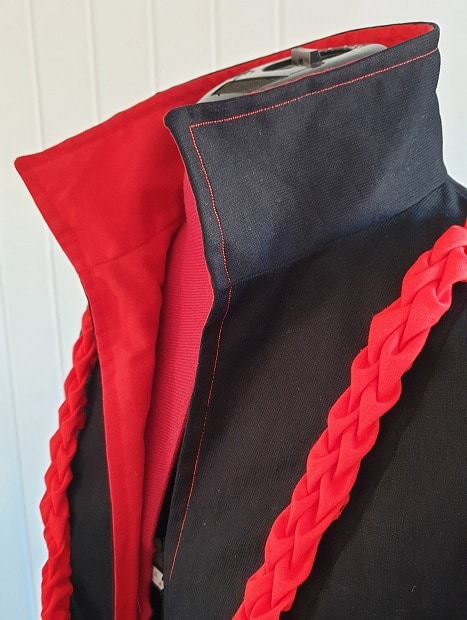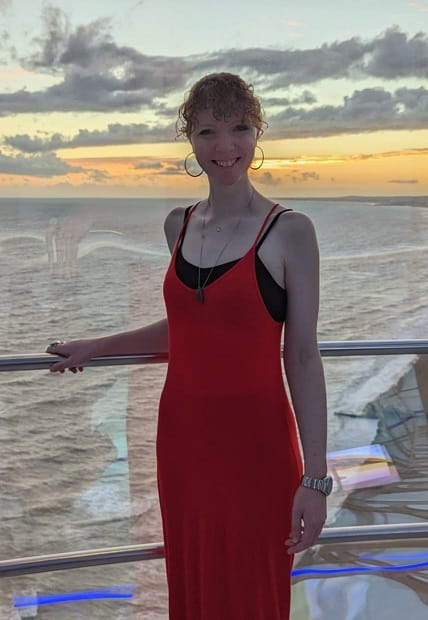
Thanet-based costume designer and textile artist Katie Hogben is presenting a brand new costume design exhibition as part of her Arts Council England funded creative project, Breaking Apart the Sick Girl Trope. The exhibition will run from Thursday 27th October to Wednesday 2nd November at Pie Factory Margate.
Breaking Apart the Sick Girl Trope is an art project exploring tropes in storytelling associated with women who have a chronic illness or disability. It looks at all forms of storytelling – including novels, short stories, plays, poetry, film, TV, fine art, and video games. The project started in early 2022 with five free creative online discussion sessions for women and non-binary people with personal experience of chronic illness or disability, investigating common ‘sick girl’ stereotypes that are damaging, and proposing authentic alternatives.
The project’s climax is a free entry exhibition at Pie Factory Margate, which is a two minute walk from Turner Contemporary. Visitors will be able to see costumes created specifically for the exhibition visualizing common damaging tropes and authentic experiences of women with a chronic illness or disability.

There will also feature artworks from women and non-binary people who took part in the creative sessions, presenting their own examples and interpretations. Featured artists to be announced soon. The exhibition will run from Thursday 27th October to Wednesday 2nd November.

The exhibition will include quotes from literature and examples of famous paintings that present damaging tropes, as well as a handling collection so you can see and feel up close some of the details of the costumes presented. There will be friendly, knowledgeable gallery assistants present throughout the exhibition, who will be happy to answer questions and assist if any visitors need guidance.
There will also be an online version of the exhibition for those unable to travel to the gallery space in Margate.
Accessibility
Pie Factory Margate is wheelchair accessible and level throughout, located on the ground floor of the building. It is a walk of 175 yards / 0.1 miles from Turner Contemporary, which has disabled parking spaces outside. It is also possible to drive up to the gallery’s entrance to drop off visitors at the door. There is consistent lighting in the gallery, with clear contrast between floors and walls. There will be no loud or sudden noises presented as part of the exhibition.
The exhibition will have seating throughout. You will be able to explore the exhibition at your leisure. There are no internal doors or confined spaces. There is a toilet at the gallery. There will be hand sanitiser and masks available. If you have any symptoms of Covid, please do not attend the exhibition in person and instead enjoy the online exhibition. We ask visitors to the exhibition to wear masks if they are able to, so that everyone can enjoy the exhibition safely.
If you have any questions about accessibility, please do email Katie on [email protected] and she will be able to assist.
If you have questions about the exhibition or would like to find out more about this project, email Katie Hogben at [email protected]. You can also sign up to Katie’s mailing list here and join the project’s Facebook group here.
About the artist

Katie Hogben is a costume designer, textile artist, writer and producer. Since 2010 she has led on costume design and production on over 20 theatrical productions, films and photoshoots, receiving training at London College of Fashion and Central Saint Martins. She has an MA in Screenwriting from the National Film and Television School. Katie also works in arts marketing, her experience including Thanet’s own Power of Women festival, Turner Contemporary and Philharmonia Orchestra in London.
In her creative work, Katie has a particular interest in the experiences of the most vulnerable in society. In 2012, Katie set up the project Revealing the Invisible, which explored the aspects of chronic illness that are invisible, such as Chronic Pain, Chronic Fatigue, Brain Fog and Depression, through fine art exhibitions, writing and film.
Find out more about Breaking Apart the Sick Girl Trope and artist Katie Hogben at www.thesickgirltrope.wordpress.com
Katie would like to say a huge thank you to Arts Council England for funding Breaking Apart the Sick Girl Trope.



